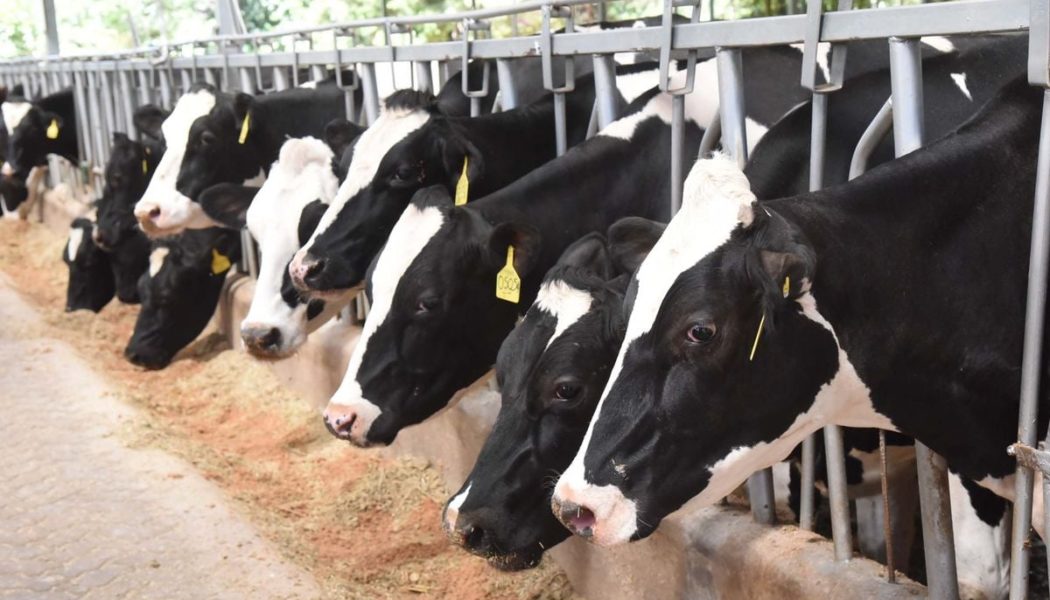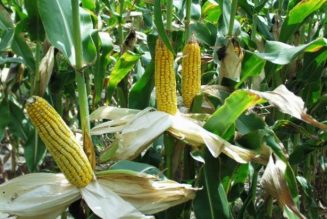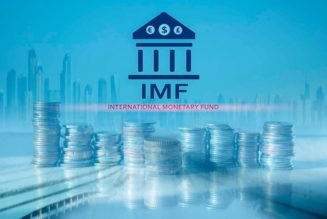
The price of milk, a staple in many Kenyan households, is poised to rise significantly if the Finance Bill 2024 is enacted. This proposal introduces increased taxes on packaging materials, which stakeholders in the sector warn will translate into higher consumer prices.
From dairy farmer to final consumer, the ramifications of this move are multifaceted, impacting everyone within the supply chain and the broader economy. While farmers decry lower prices for their milk, and consumers cry foul of the inflationary shelf prices of milk and related products, it’s the dairy processors and packaging manufacturers that shoulder the burden of anti-business tax policies.
Milk production in the country stood at 806.6 million litres as of 2023 according to the Kenya National Bureau of Statistics Economic Survey 2024. This is an increase of 6.9 percent from 754.3 million litres in 2022. This represents an 11.1 percent increase in the value of marketed milk from Sh36.9 billion in 2022 to Sh41 billion in 2023. The dairy sector is a key economic driver in the agricultural and manufacturing sectors, as well as a huge contributor to the country’s Gross Domestic Product (GDP).
With profit margins for milk processors oscillating around five and seven percent and packaging contributing around 15 percent to the product’s cost, any slight changes in costs of inputs would completely erode profits and the viability of continued investment in the sector.
The Bill aims to enhance revenue collection, streamline tax administration and curb environmental pollution in Kenya. One of the notable provisions is the removal of VAT exemption on key inputs used in manufacturing materials used in the packaging of milk and other dairy products. These key inputs are: pressure sensitive adhesive of tariff numbers 3506.91.00; plain polythene film/LPDE of tariff number 3921.19.10; plain polythene film/PE of tariff number 3921.19.10; and PE white 25-40gsm/release paper of tariff number 4811.49.00.
The expected impact of charging VAT on these inputs will be an increase in production costs, which will inevitably be passed on to consumers or force dairy farmers to accept lower prices for milk production to curb a rise in retail prices.
Vision 2030 has an ambitious plan to drive the manufacturing sector’s contribution to GDP from seven percent currently to 20 percent by 2030. This is also in line with an initiative by the Kenya Association of Manufacturers (KAM) dubbed Kenya Manufacturing 20by30, which seeks to maximise on opportunities available to spur local industry’s growth.
Realising this plan calls for bold, pragmatic decisions to develop and implement transformative industrial policies that will favour the local manufacturing sector and attract investors. An analysis of Kenya’s goods-making segment shows that it has been shrinking, from contributing 10.9 percent to GDP in 2013 to 7.6 percent in 2023. One of the major reasons for this is the uncertainty and unpredictability of tax policies effected yearly through various finance Acts.
The dairy sector is one of the most vital components of Kenya’s agricultural sector, contributing significantly to the country’s GDP and providing livelihoods for millions.
East African Community (EAC) Gazette Notice No. 11 of 30th June 2023 effectively increased the import duty rate on kraft paper and paperboard under 4804.29.00, & 4804.39.00 HS Codes from 10 percent to 35 percent for a period of one year. This product is a key raw material component in the manufacture of liquid packaging materials that is used mainly in the packaging of milk.
It is imperative to note that the same kraft paper and paperboard are not available locally or within the EAC or Africa in the quantity and quality required for safely and adequately packaging milk products. The increased duty rate is punitive and leaves no alternative for manufacturers inadvertently increasing production costs across the entire dairy value chain.
Finished packaging products imported into the EAC are treated as intermediate goods and thus, subject to duty at 10 percent under HS Code 4811.59.90 effectively making locally produced products uncompetitive.
Basically, the raw materials are taxed at a higher rate than the finished products. This generally goes against the letter and spirit of the East African Customs Management Act 2004 and the Common External Tariff. These two policy documents clearly provide that raw materials are subjected to duty at zero percent, intermediate goods at 10 percent and finished products at 25 percent.
Implementing the EAC Gazette Notice is tantamount to discrimination and infringes on the right of equality and benefit of the law for local manufacturing as protected under Article 27 of the Kenya Constitution, 2010, in comparison to regional counterparts and importers of finished paper-based food & beverages packaging, which is currently imported under HS code 4811.59.00 at a duty rate of 10 percent.
The changes effected by the EAC Gazette Notice, particularly the increased duty rates on paper and paper products, have had significant implications for packaging material manufacturers in Kenya especially those involved in manufacturing of milk packaging materials.
The cost of packaging material at the current import duty rates contributes to 15 percent of the final cost of milk, whereas it should be no more than 10 percent, therefore leading to the following notable consequences in the dairy sector.
Reduced consumption of milk due to increased prices, low government revenue in form of taxes, reduction and withdrawal of investment, limiting Kenya’s ability to generate exports from dairy due to non-competitiveness and threat to local manufacturers forcing farmers to dispose of excess milk.
It can also lead to lower nutrition value of the Kenyan population, especially children, increased inflation and a high cost of living, low-value addition in the dairy sector proliferation of milk hawking, competitiveness and job preservation as well as environmental concerns.
Kenya Dairy Processors Association (KDPA) has in the past expressed concerns over new taxes within the dairy sector. They have stated that the increased cost of packaging materials will inevitably lead to higher production costs. This cost will be transferred to the consumer, resulting in higher milk prices.
Milk processors, already grappling with high operational costs due to fluctuating energy prices and transportation challenges, are now facing an extra financial burden. The cost of packaging constitutes a significant portion of the overall production costs, and any increase in these costs directly impacts the final product price.
An increase in milk prices is likely to have a ripple effect across the economy. For the average Kenyan family, where milk is a daily necessity, higher prices will strain household budgets. The Central Bank of Kenya (CBK) has already flagged concerns about rising inflation, which stood at 7.9 percent in May 2024. The cost of food items, particularly milk, is a critical component of the consumer price basket, which tracks inflation through the annual average retail prices of standard consumer goods.
Reduced consumption of milk and dairy products in general, will lead to lower production, which in turn will affect government revenues. Companies within the dairy sector supply chain will either contract and downsize, consolidate or close operations entirely. Loss of employment-related and income taxes would deal a blow to the government. Reminiscent of the laffer curve theory. An inverse of the government’s intention to raise tax revenues.
Furthermore, dairy farmers are likely to feel the pinch. With processors under pressure to manage costs, there could be a squeeze on the prices paid to farmers for raw milk. This scenario would be particularly detrimental to smallholder producers who constitute the majority in Kenya.
The reaction from stakeholders has been swift and vocal. Consumer advocacy groups have criticised the government for imposing measures that will hit ordinary Kenyans hardest. The Consumer Federation of Kenya (COFEK) has called for a review of the provisions of the Bill on packaging materials, arguing that the burden should not be placed on consumers.
In response to the outcry, the government’s proponents have defended the proposal, emphasising the need to balance economic growth with environmental sustainability. Treasury officials have argued that the increased levies on packaging materials are part of a broader strategy to promote sustainable development.
The question that should be posed then is in the case of paper packaging, is it not a more sustainable way of packaging goods over other materials? If the government is keen on environmental sustainability, should they not be promoting products that are eco-friendly?
As milk prices are expected to rise, consumer behaviour is likely to shift. Households may opt for smaller packaging sizes to manage costs, or in some cases, reduce their milk consumption altogether. This could have broader implications for public health, particularly for children who rely on milk for essential nutrients.
Passage of the Bill as it is will set the stage for significant changes in Kenya’s dairy sector. While the intent behind the increased taxes on packaging materials is to boost revenue, it must be stated that the paper packaging materials that are under siege are eco-friendly and in fact in line with the governments green policy on environmental sustainability, which cannot be overlooked.
Stakeholders are calling for a balanced approach that considers the economic realities faced by consumers and producers alike. As the government engages with industry players to explore mitigating measures, the hope is that a solution will be found that addresses both environmental concerns and economic stability.
In the meantime, consumers are bracing for the anticipated increase in milk prices, with many already adjusting their household budgets to accommodate the rising cost of living. The coming months will be critical in determining the long-term impact of the Bill on Kenya’s dairy sector and its consumers.
The proposal presents a complex challenge for Kenya’s dairy sector, balancing the need for increased revenue and environmental sustainability with the economic realities faced by consumers. As stakeholders navigate these changes, the focus must remain on ensuring that essential goods such as milk remain affordable and accessible to all Kenyans.
The government’s ability to heed expert and well-informed advice will be crucial in determining the Bill’s ultimate impact on the economy and the well-being of its citizens.
The writer is a legal associate at Andersen in Kenya.









